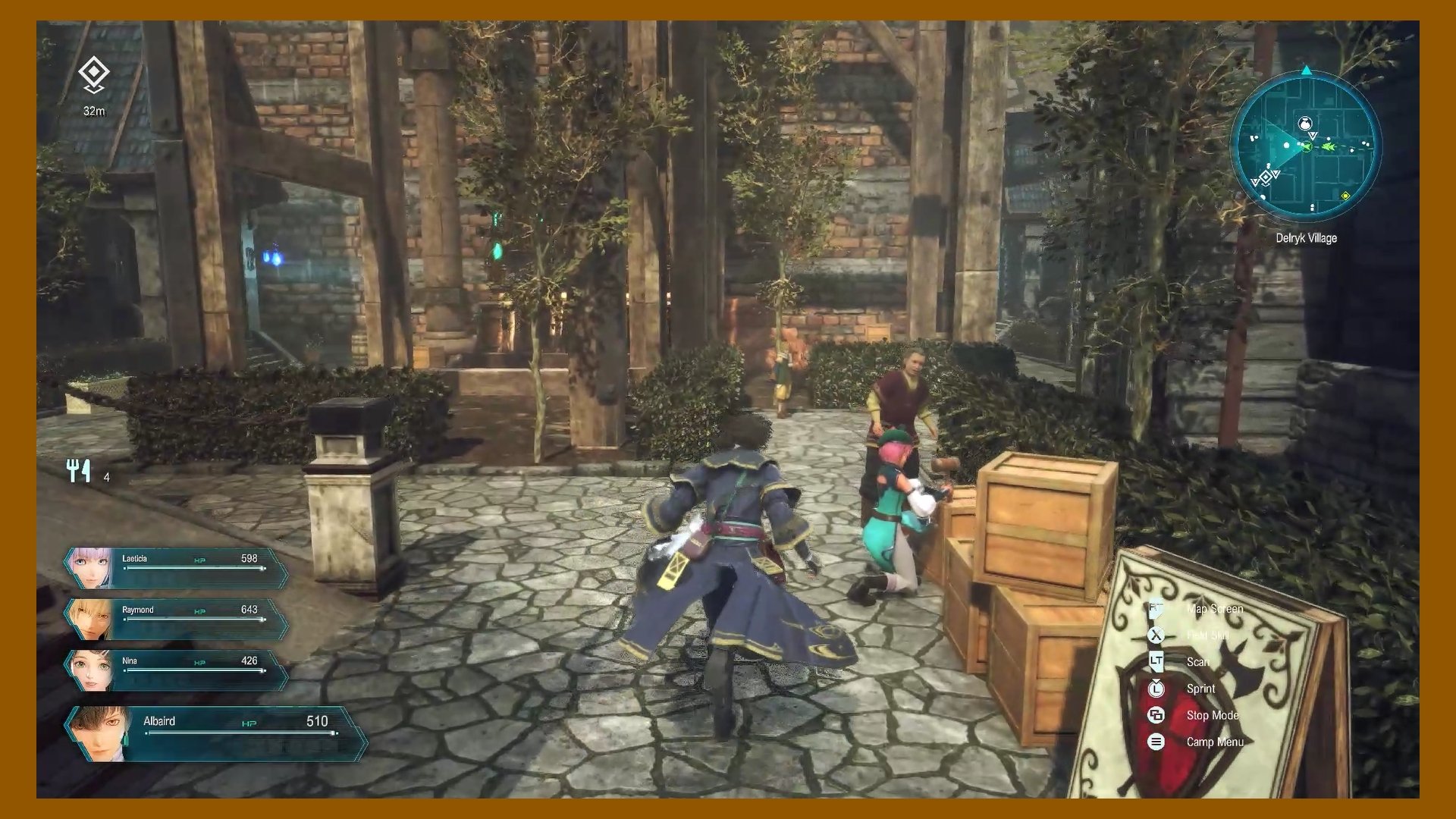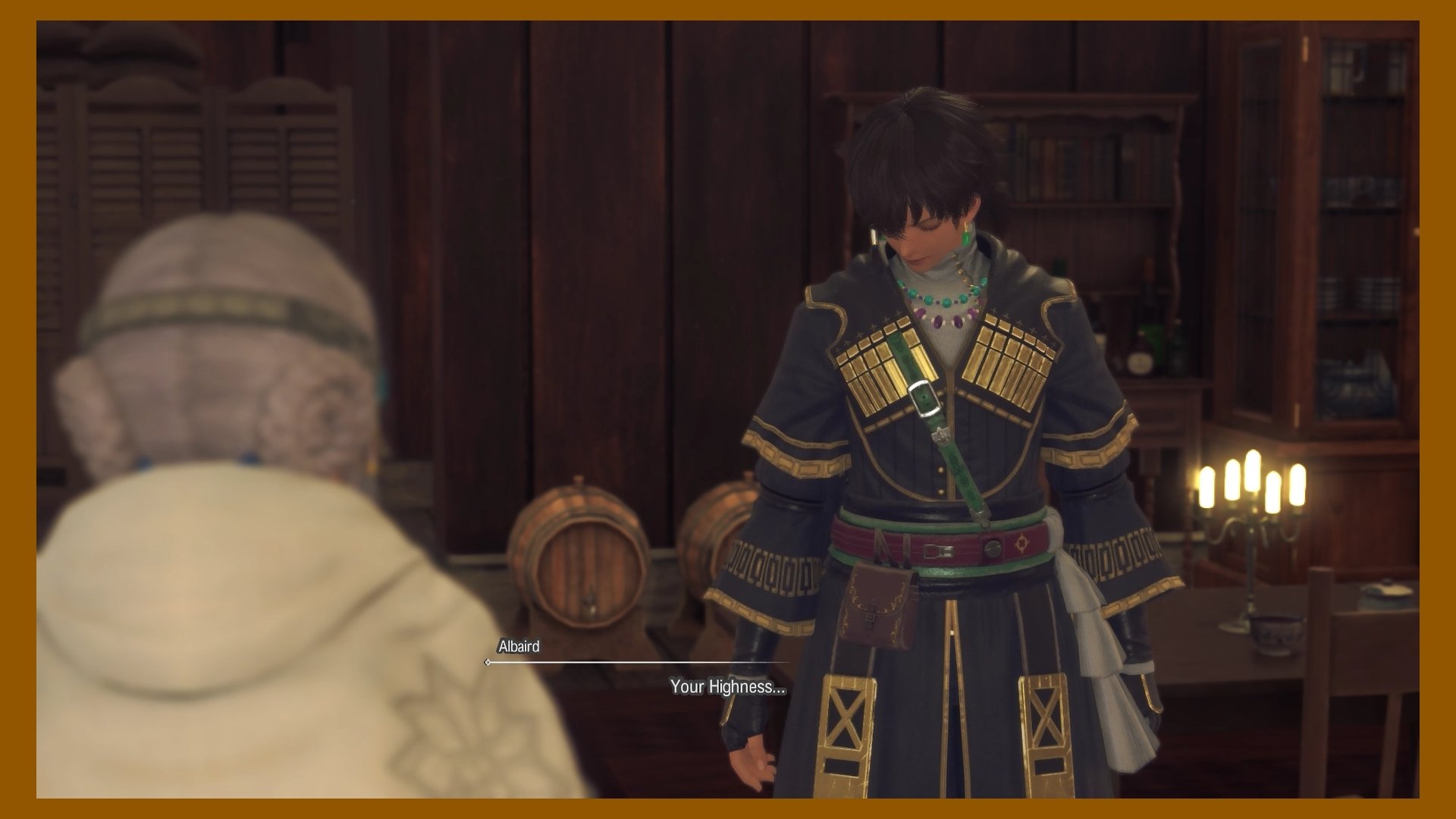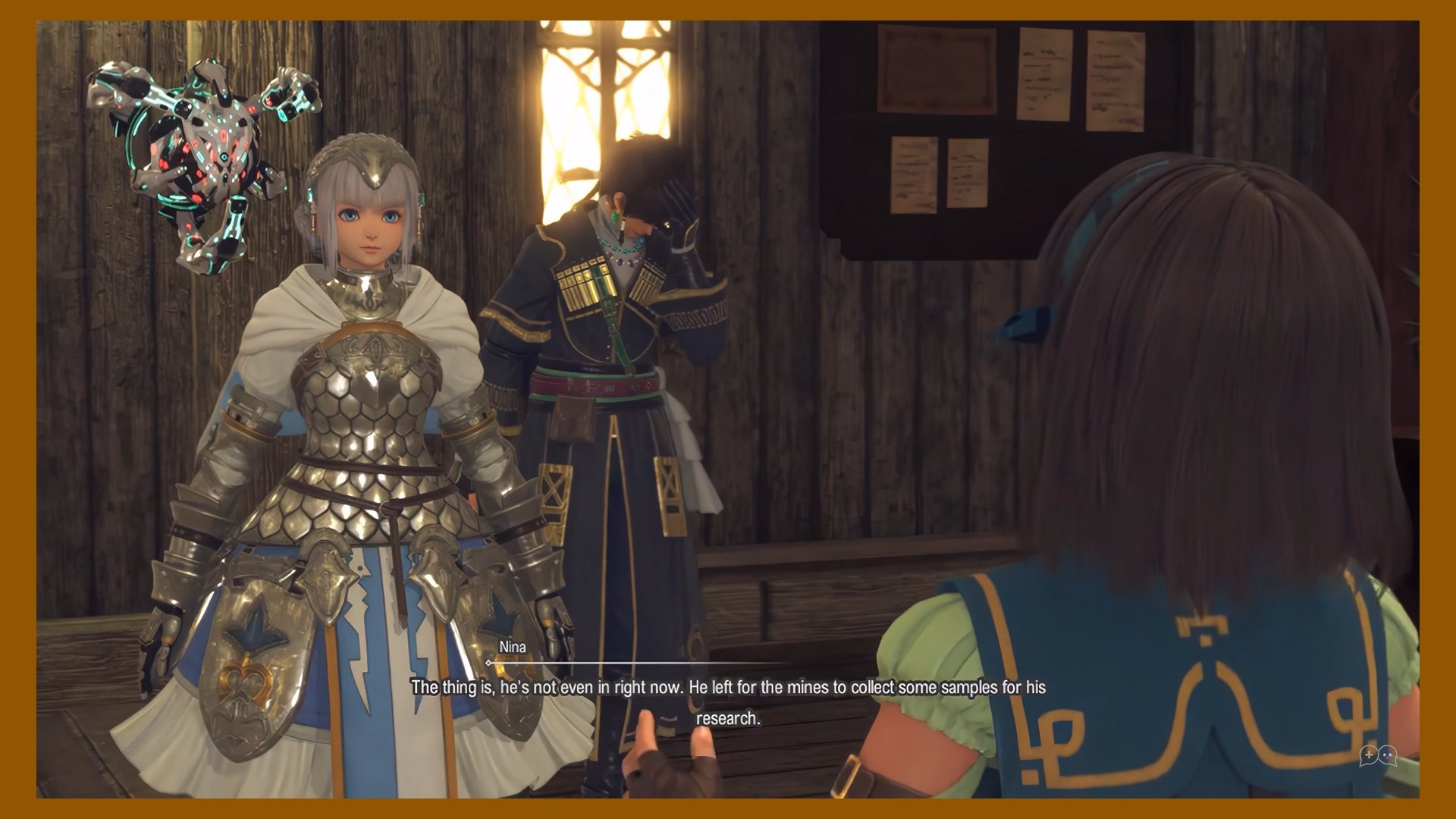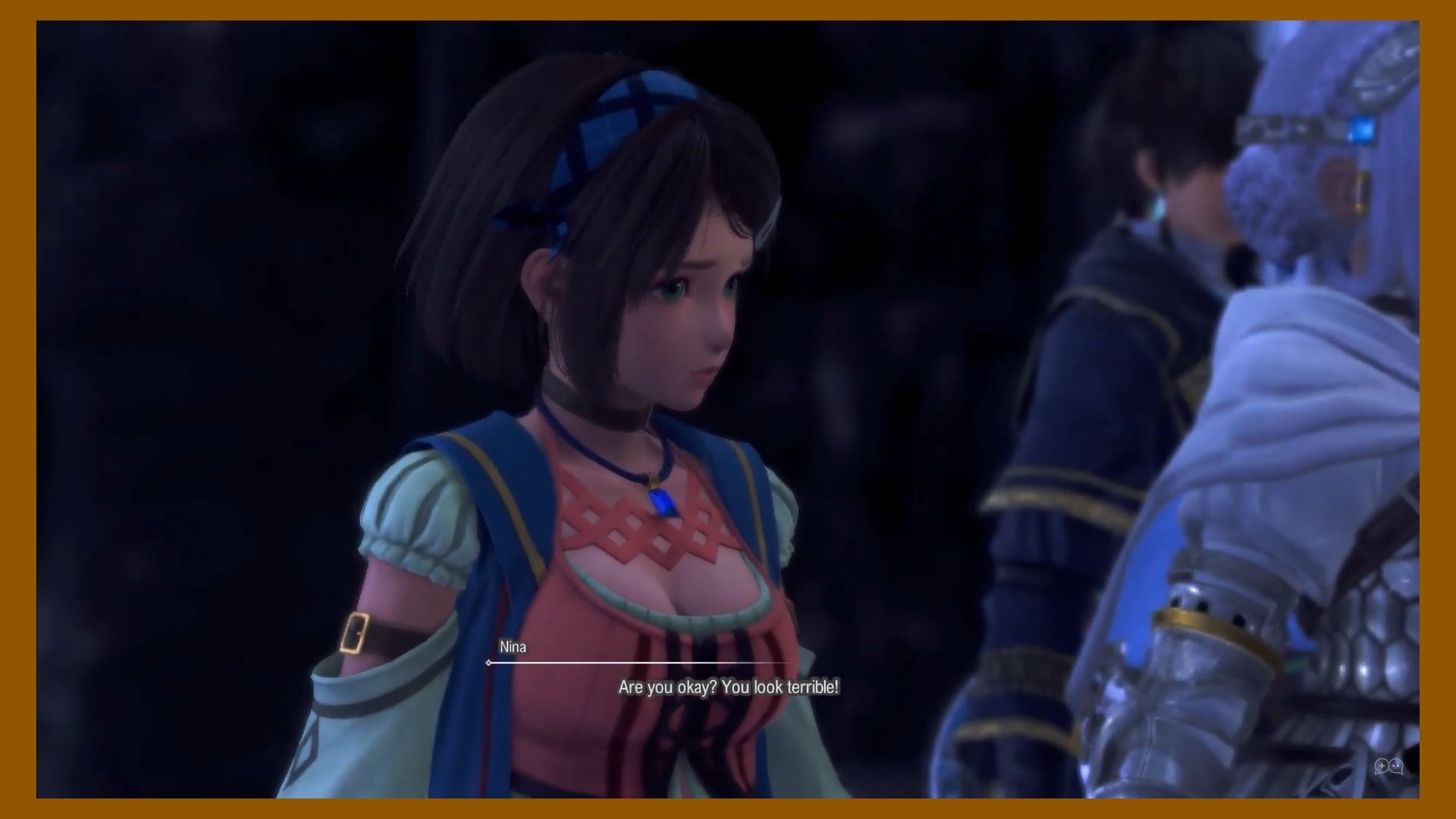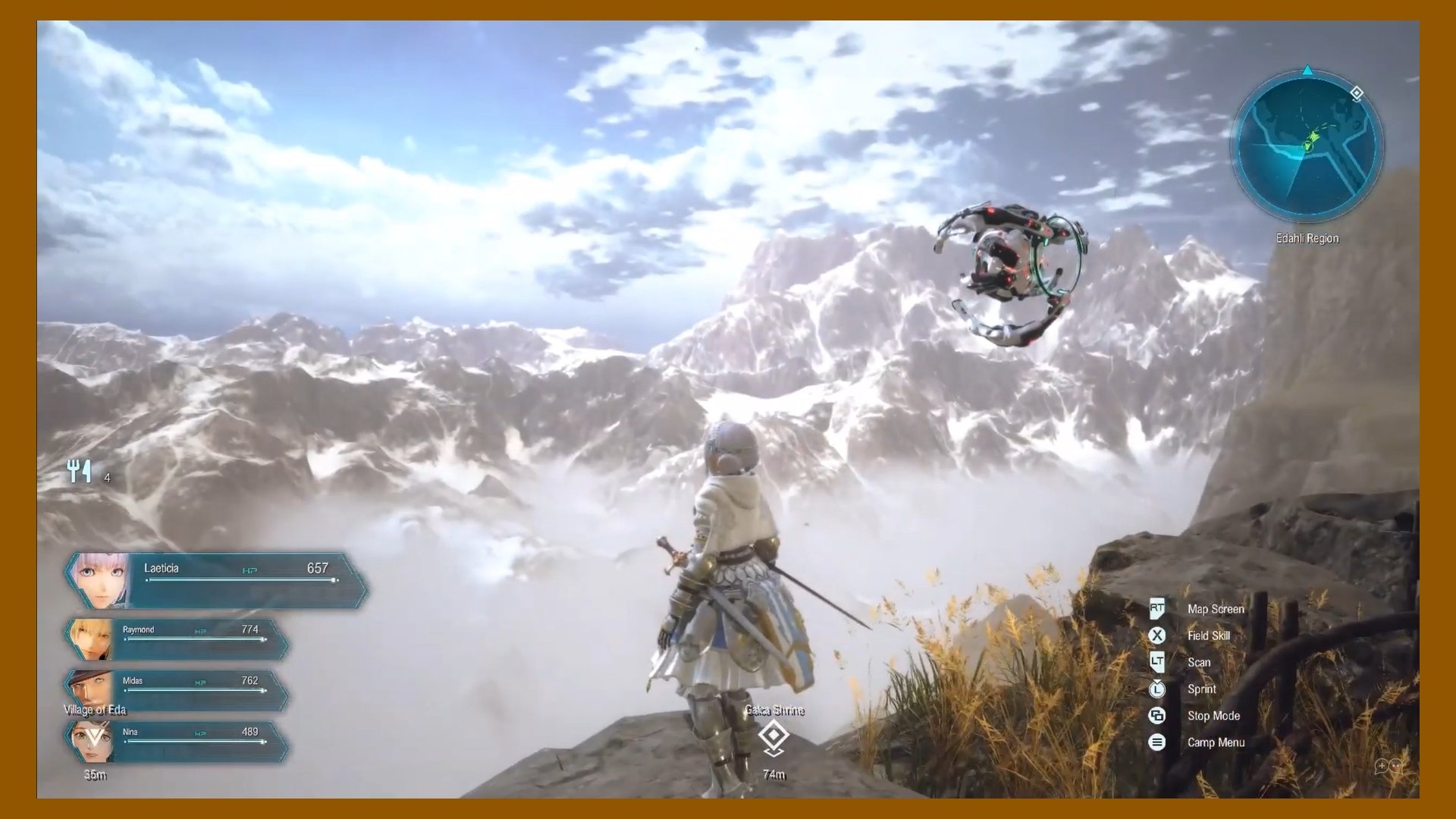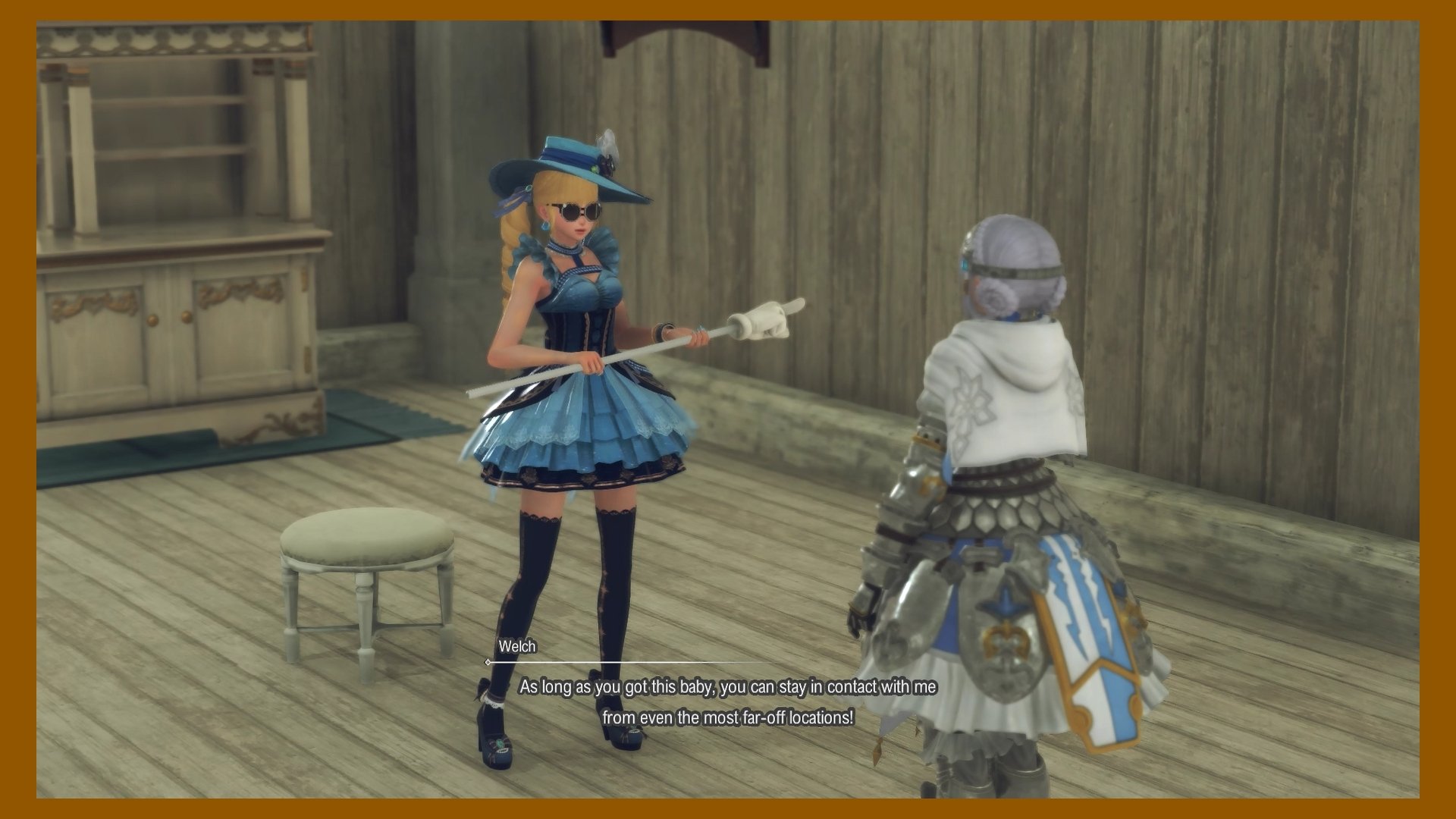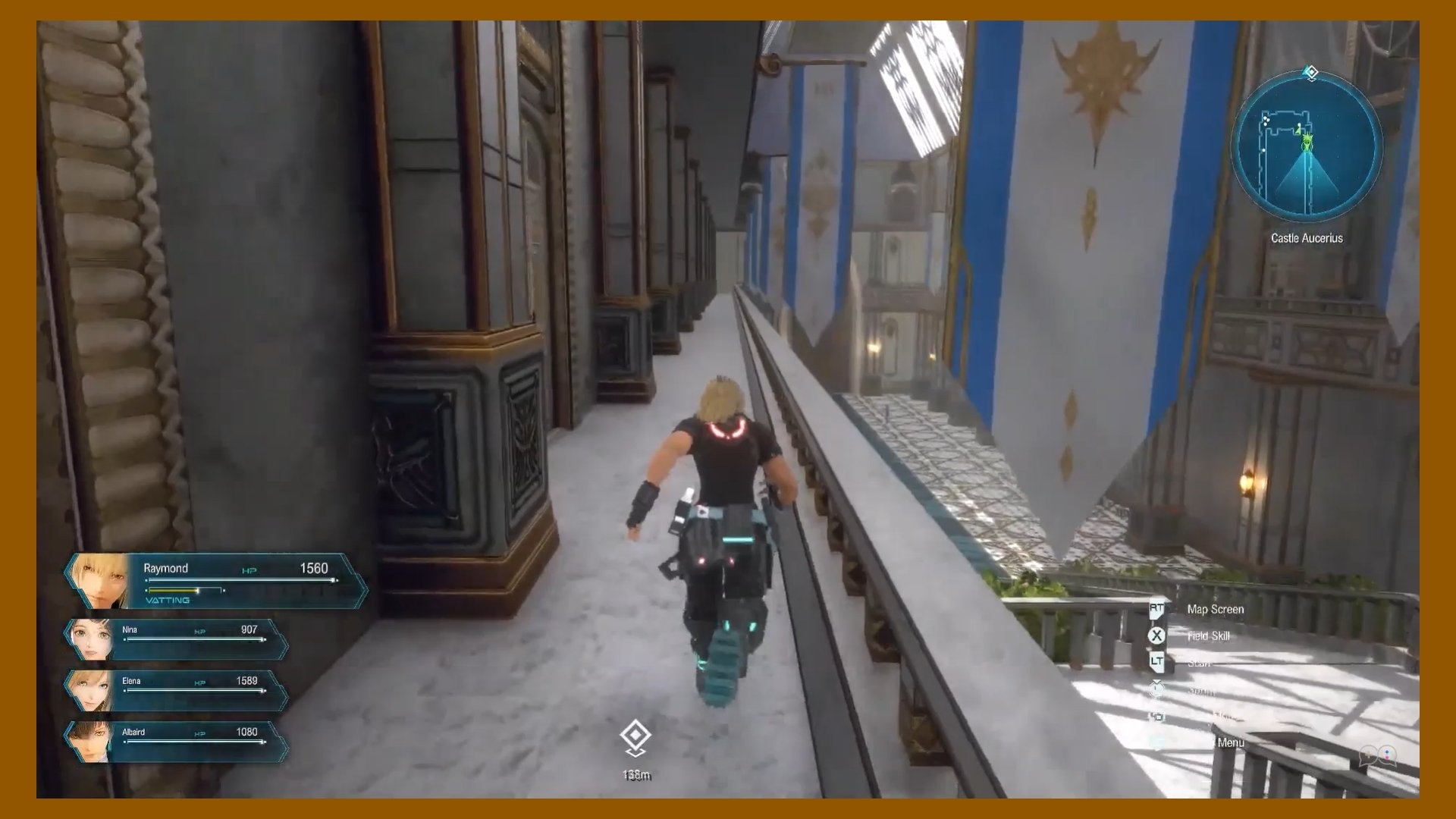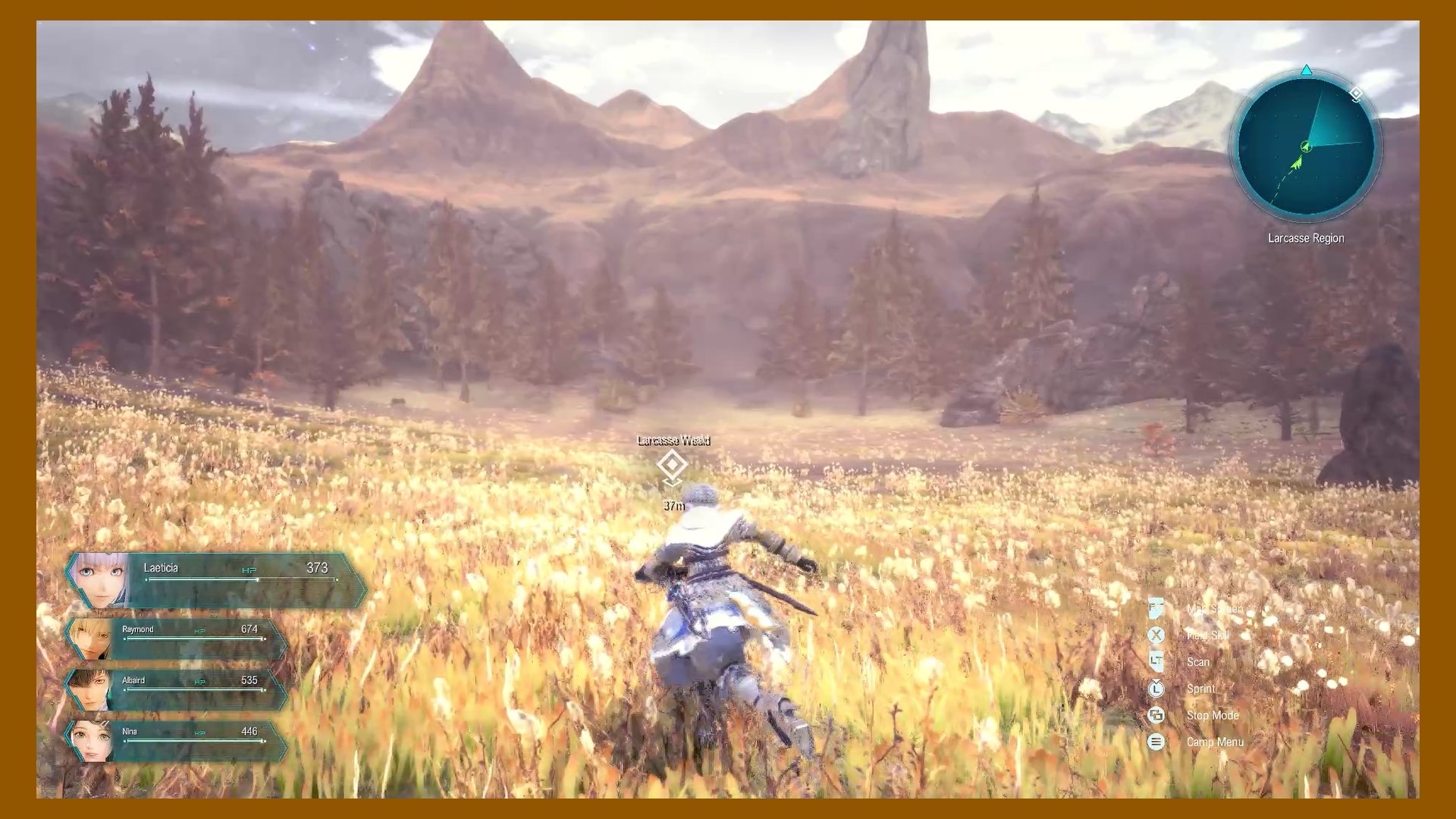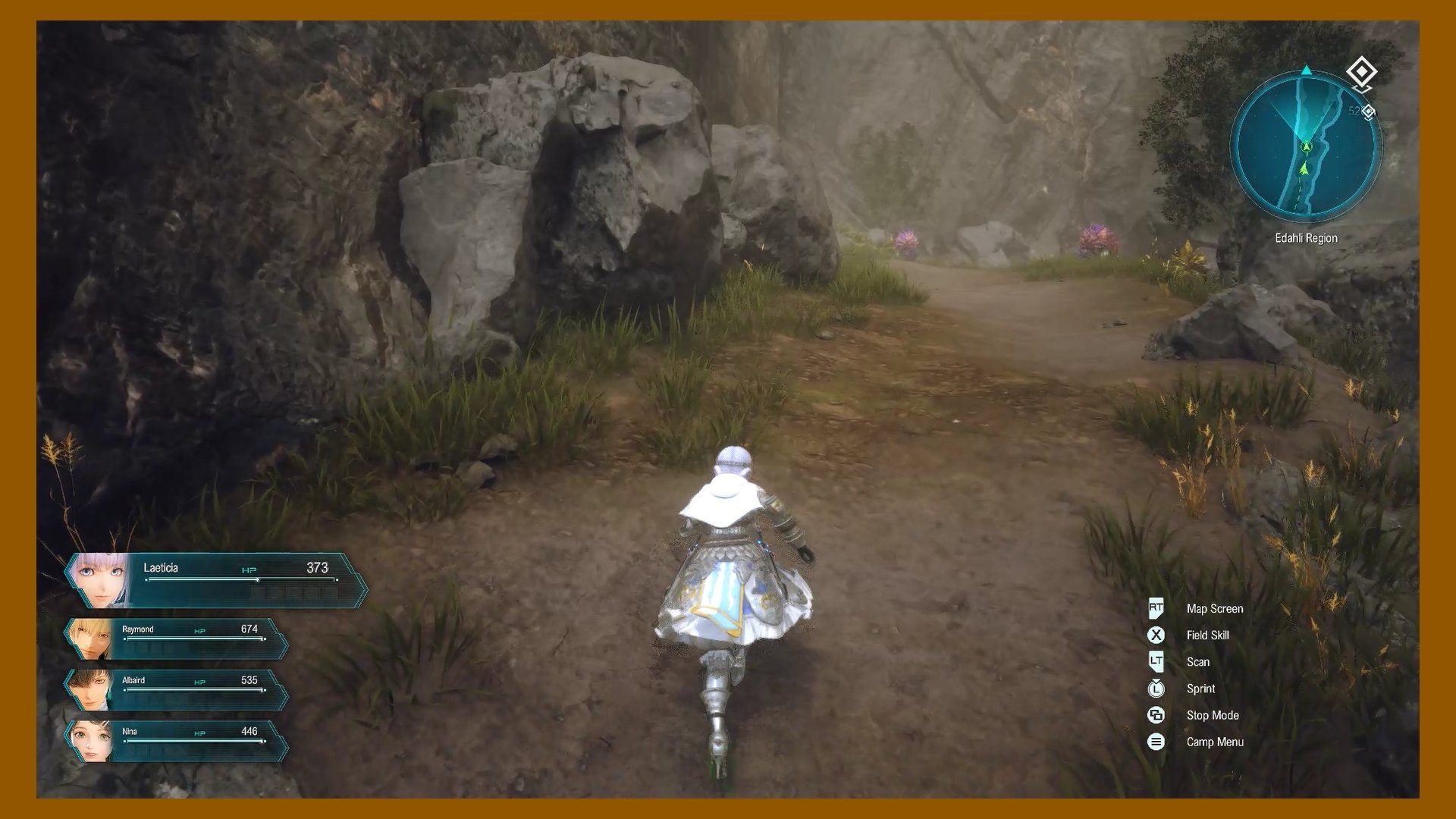Star Ocean: The Divine Force is Everything Wrong With JRPGs | In-Depth Critique
Developer: tri-ace
Publisher: Square-Enix
Platforms: PS5, PC
If you've seen my other Star Ocean videos, this one needs no introduction. If you haven't, well, it's been a rocky relationship, to say the least. Back when the PS4 was first released I was saying the same thing I'm now saying about PS5: what's the bloody point? The previous game, Integrity and Faithlessness was the first game I played on the system and without a doubt, one of the worst games I've ever played, yet with games like Star Ocean 3 and 4 remaining some of my favourites to this day, there was at least a glimmer of hope that Square Enix could actually put a decent effort in this time. I'm going to leave no stone unturned as we venture into the next generation of JRPG.
Gameplay
Star Ocean: The Divine Force is a lot more open than previous games in its exploration. Many areas are sprawling and a lot more verticality has also been added. Cliffs, floating platforms ruined columns or giant tree roots can all be scaled using DUMA, your spherical robot companion, that launches the character you control in almost any direction you choose.
Although this could have easily been a welcome addition to the franchise and created interesting opportunities for exploring a well-crafted world with an equally well-crafted game mechanic, unfortunately, neither is particularly engaging. The movement has no weight to it whatsoever and characters often get stuck or glitch out on the scenery.
There are purple crystals scattered around everywhere which give the player something to collect at least, these upgrade DUMA in and out of combat, but you will mainly find yourself running for extended periods of time through an extremely samey and uninteresting series of disjointed open maps. Thank god there's fast travel in this game because the ever-present quest marker will have you going from town to town, backtracking even 4 or 5 times, just to have a 5-second conversation of no consequence whatsoever and be sent off to yet another town that you've already visited. Very rarely will you have been through an area and find that there are new enemies or interesting changes that might make this backtracking bearable.
Treasure chests are extremely easy to find as you can use DUMA to scan for them. They then appear on your map but also, in the more tight corridor-like areas, you can see where treasure is likely to be because it's often in a dead end along a branching path. So that's 3 ways the game makes finding treasure obvious, not that you find much exciting gear in the first place. It's often a few standard consumable items.
Once in a town, If you were thinking you could have some interesting conversations with characters and ask around for info on your next objective, as is honoured RPG tradition, you'll be sorely disappointed. The private actions of previous games are bafflingly absent, though it's not that the system is not included in the game, it's that I couldn't actually find any to do in my playthrough. I'm not saying these should be obvious, though even that would be an improvement, but surely at least some should come up naturally through playing the game normally.
The only characters you can talk to are those that give out the game's side quests. These do not deviate from what we've come to expect from Star Ocean, each one being a fetch quest to bring back a key item or a certain number of monster loot. Again, you will not find much interesting here in terms of reward and just like it's predecessor Integrity and Faithlessness I think it's mainly due to the game being laughably easy. When you can breeze through the game barely going into the skill tree to upgrade your characters or forgetting you just got a new weapon because you're already utterly destroying groups of enemies in 10 seconds flat, there's not much reason to seek the rewards of these side quests.
The main meat of the gameplay is of course the combat, and Divine Force is at the very least more enjoyable here than Integrity and Faithlessness, though perhaps still equally as shallow. DUMA can create a shield around you and launch you at enememies. If you hold left or right whilst doing this move, chances are you'll blindside one or more enemies, stunning them and allowing you to do increased damage. Once you get the hang of the awkward, floaty controls, this is both a blessing and a curse. It's kinda fun zipping back and forth between enemies, but it also makes the player controlled character an absolute powerhouse than can barely be touched by most enemies in the game.
The only times things got a little tough was when bigger enemies started doing one or two hit kills on the rest of the party, but the trick sometimes was, instead of trying to revive them with an item and risk getting hit yourself, just continue the fight and the enemy will likely not be able to touch you. Once the fight is over, your teammates come back with 1hp, continue to the next fight and ignore the fact that they will die immediately because the majority of the game can be played like this, and you will still win. I even fought a boss battle this way and the passive skill auto heal was healing me faster than the boss could do damage at skill level 1.
Other than flying around with DUMA each character of course has their own arsenal of skills which can be ordered to your liking in chain combos assigned to square, triangle or circle. MP has been done away with and in it's place there's a stamina bar which drains quickly but also fills quickly once you stop attacking. The more you blindside, the more the maximum stamina you can have, allowing you to do longer combo chains and this is not lost upon switching characters mid fight.
To understand why the absence of MP use for skills and magic is actually a huge detriment to this combat system, we have to compare it to the excellent combat in Star Oceans' 3 and 4. In 3 if a character's MP was reduced to 0 they would be incapacitated, so using all your most powerful skills all the time was extremely risky. If an enemy could inflict damage to your MP the entire party could be wiped out in a flash. This is one of the reasons why Star Ocean 3 is the most difficult in the series, however it also allowed you to do MP damage to enemies and if you paid attention to its systems you could formulate amazing strategies in taking out the insanely tough superbosses in its optional final dungeon.
In star ocean 4 blindsides were introduced and also the rush gauge which when full allowed you to do increased damage for a certain amount of time. To do decent damage, you wanted to utilise both of these and expend as much MP as you could in that limited window where you activate your rush gauge and blindside the enemy. So it was no longer risky to use all your MP but you had to use it in the right way at the right time to maximise its effectiveness.
In Star Ocean: The Divine Force you can blindside enemies far easier and spam your most powerful attacks whenever you like until the stamina guage runs out, wait a measly 2 seconds for it to fill again and continue spamming your most powerful attacks. Even if you're playing risky and wailing on an enemy that hasn't been blindsided, the player isn't really punished sufficiently as the standard dodge can easily get you away from the enemy enough to blindside them again and put them out of action. Long story short, the blindsides are insanely overpowered in this game and there is no reason to think about what you're doing or better strategies to take enemies down.
Because of this, the majority of the characters play extremely similarly. So whilst in my Star Ocean 4 review I covered most of the characters individually and how they drastically change your playstyle when using them, there is no reason to do that here. There are no light and heavy attacks, only chain combos that you build out of any of that characters skills that you choose, yet the game still suffers from repettitive, shallow combat. The only variation I can touch on in the standard character setup is some moves have more range, but when you have a mechanic that can launch you across the battlefield with the touch of a button, it's hardly something that requires much thought.
There are a couple of characters which deserve a specific mention though. Nina is a 100% support character, something which we haven't had before in the series. She runs around giving area of effect buffs, healing, or moving players or enemies around by either bashing or teleporting them. Again, moving characters around seems a bit pointless when you have such a huge range of movement in Divine Force. I do however like the idea of having a support only character and think the area of effect can lead to some interesting strategies. For instance, you could activate her heal, which also heals over time, and switch to the character you want to heal to move them into the area of effect. In the end however, actually playing as Nina is just such an incredibly tedious and slow way to play the game because you can't rely on the AI to deal damage at anywhere near the rate that you would if you were controlling an offensive character.
The other noteworthy addition is Midas who is a fully magic focused character. Rather than just standing there waiting to cast, he can continue charging whilst performing blindsides which in theory sounds pretty fun...except it just doesn't feel satisfying. More often than not you will charge towards an enemy to blindside them, your magic attack will charge and then you're firing off a spell that will whizz past its intended target as it was designed to be used at range. The casting of single spells does not lend itself to having a customisable chain combo and choosing spells from the menu to suit each scenario is cumbersome. It wasn't an issue in the other Star Ocean's as the magic users also had regular skills to use, with the magic being more powerful if used at the right time. So Magus as a 100% magic character is another good idea that fails to play into any good game design choices.
Aside from this, item creation of course makes a return, however as I mentioned previously, none of this feels like something that would help you overcome the already pitifully easy enemies the game throws at you. It's also a lot less satisfying a system this time around as you kind of just throw random items together and depending on the skill level of your character this will affect the outcome of creation. This completely deincentivises item creation until you have maxed out your character's creation skills, because unlike Star Ocean 4 where specific recipies would be unlocked as you go, to be crafted at your leisure, this means you never know what you're going to get or if you just wasted your items. It also takes the fun out of searching for ingredients you know you need for a specific recipe. The flaws were so immediately apparent here that I barely touched item creation as I felt it was yet another waste of time.
Story
The first thing to note about the story is the player's choice of main character between Raymond and Leticia. This will affect a handful of scenes throughout the game where either Leticia or Raymond will go off and do something whilst the player will stay with the character they chose. Almost every instance of this fails to give the game a legitimate reason to have this choice in the first place. One character will say things like, "I wonder why Raymond left so suddenly" and then that'll be the extent of the scene, rather than using the opportunity to build chemistry between the characters that have been left.
I meantion this first because you will notice this as a common thread throughout my story breakdown. The game seems obsessed with creating these opportunities where the party seperates, sometimes seemingly for no real reason, so that a group of characters can discuss...absolutely nothing of interest.
Tri-ace obviously thought players would want to replay the game to see these extra scenes, but they themselves are nothing that the whole party could not have been there for and feel completely forced and pointless. But I'm getting ahead of myself.
What is Star Ocean: The Divine Force actually about? Usually by the end of the introductory sequence of a piece of media you would have a grasp on what the story is about, however, this would not become even slightly apparent until hours and hours into the game. I mentioned when I played through the demo that the worst possible way you could open a game is by dumping you into an ongoing situation with no context whatsoever. I had a feeling that is how this game would begin and I was right. Raymond and his crew are in the middle of a space battle with a federation ship for reasons unknown to us, and on the planet below princess Leticia and her aide Albaird have snuck out of the capital to do....something. Raymond launches in an escape pod and lands right near the campsite and thus, the two main characters meet.
This scenario can easily be compared to my favourite JRPG of all time: Dragon Quest VIII. You have several characters already on a quest, they are camping out on the way to a specific destination and you get a quick introduction with them talking amongst themselves, then a fight to introduce you to the combat. However, in Dragon Quest, the characters then arrive in town and discuss exactly what it is they are doing there and the goal of their quest. No such scene occurs in Star Ocean: The Divine Force. With each new member that joins the party it becomes increasingly frustrating that characters will literally appear, say barely anything of substance or explain their motivations, then you're expecting the conversation to continue and a character just says "Right then, let's all go to village of Rhpafwe" and the new character is instantly added to your team. Genuinely head scratching moments.
In the opening hour, they also use the extremely overused trope where Albaird doesn't trust Raymond and doesn't want anyone else involved in their quest because he's over-protective of the princess but this is almost immediately dropped and no real conflict arises.
This alludes to possibly the biggest downfall of Star Ocean: The Divine Force, that the characters have absolutely zero chemistry. You see, I can take or leave the storylines in the other Star Ocean games, they aren't fantastic. Even the very similar Tales Of series doesn't really have much memorable going for it in terms of story but the characters all have MAJOR chemistry in Star Ocean's 1 through 4 and even moreso in the Tales Of games. Characters are constantly interacting with each other about any topic imaginable. Whether it's a serious conversation about a character's past or a quirky one about cooking or who's the cutest, these characters need to ooze personality, otherwise not only do you have a story that nobody will care about, but characters doing and saying things that nobody cares about, in a shit game that nobody cares about.
Anyway, on with my laboriously detailed review of said game.
The camera starts doing this weird thing where it looks at Albaird's arm during cutscenes. I actually thought it was other characters looking at his frilly sash thing he has hanging there, but apparently this was to show that he has a glove on one hand. This isn't just a character design quirk, apparently albaird has a magical prosthetic hand, and not the cool kind that's good for making devils cry. Albaird is also sick, although it's not clear whether these two things are related. This all comes up randomly as a huge part of the main quest which conveniently involves finding Midas, the same person the characters were looking for anyway. This information about why Leticia left her city on her quest comes well over an hour into the game by the way, and even here, the characters just continue talking in vague terms and ask no questions of each other that any normal person would ask.
Questions like: Why do they need to find Midas so bad? Why isn't there anyone out looking for the missing princess? What was Raymond's mission on his ship? Why is he not part of the galactic federation? Why was the federation attacking his ship? Why have the federation just left when they clearly would have known the escape pods were launched?
A couple of these questions are only answered, if at all, more than 6 HOURS into the game.
So the party goes to ask a doctor who worked with Midas about his wherabouts, at which point he explicitly states that he would give the characters this information, if their motivations were pure. The characters have no answer to this and instead stand there in utter bemusement before saying "well, I guess something will come up then," and leaving.
It's here that Nina joins the party, on the promise that the party will end up at the capital where she can study her healing, however, this is not where the party is headed. She has no real reason to go find Midas any more than she did before, when she could have easily found out where he was and gone herself. After a trip to a nearby town for another doctor to give a second opinion on Albaird's arm and/or mystery illness, the player then backtracks to the initial doctor again who decides that actually, he will now reveal the whereabouts of Midas, despite nothing really changing and the characters still not revealing anything about their motivations. For all he knows, the main characters are a band of hardened assassins out to kill Midas because he sleighted the royal family or something, hell, at this point that could be the case and the player themselves would be none the wiser.
So it's off to Midas's village. Heavily guarded with magical machines of his making which attack the party without provocation. It's ok though, Midas then lets them in straight away to treat Albaird. Rather than just having a boss fight and Midas say, whoops, I guess you're not an enemy, would it not have been better to have the characters prove themselves in some way?
Further to still having no clue what the characters are trying to achieve hours into the game, Leticia then states outright that whatever that was, making a new prosthetic arm for Albaird is now far more important. She emplores Midas to help them. Despite everyone agreeing that Midas is a very busy man that his village relies upon greatly, once again he decides to join the party just because he feels like it I guess. Even despite making it known that the rest of the characters being there is a complete inconvenience to him and them offering nothing of value whatsoever.
The only reason that is vaguely alluded to is his interest in DUMA. The spherical robot that's been following them round and been of no consequence to the plot whatsoever thus far. The character's mention worries that DUMA will draw too much attention, the princess is on a covert mission after all, but this is hand waived away by Leticia in one line saying that DUMA resembles the floating orbs that Semiomancers have with them. Raymond's response to this is. "OK" and then the characters continue on their journey. Imagine if in Final Fantasy X, Tidus, upon arriving on Besaid island and hearing this Yuna character is a summoner, instead of saying "What's a summoner?" instead just said. "OK everyone, let's head to Luca now." That is how poor the writing is in Star Ocean: The Divine Force. A character is told about an important aspect of the world's lore and has no reaction whatsoever and as a result, we the player are left with nothing to latch on to and no reason to care.
Once Midas finishes his examination the characters exit his house and clearly see Elena's escape pod crashing far to the East in these mountains, then the characters take an extremely short trip in the opposite direction between a crevice in the mountain adjoining the village and find the landing pod there where it would have been impossible to land judging by the prior scene 60 seconds ago.
What follows is the most insane backtracking section I think since Devil May Cry 4. The player returns to the start of the game to fetch parts from Ray's escape pod, then the party splits up, with half going back to fix Elena (who it's revealed is an android so that's why the parts were needed) and the other half revisiting every town that has already been visited to ask about sightings of Chloe's escape pod. Something which could have already been asked about when they were there initially. This adds nothing to the plot and only serves to pad out the game's length. The split party meet back up again at Elena's escape pod where Ray speaks to Leticia about being tired and Elena joins the party without a single word spoken in introduction to the rest of the characters that she has just met. This happens again when the characters later meet another of Ray's crew, Chloe, who upon being released from jail just stands there as part of the crew almost like a placeholder asset.
The characters backtrack yet again to a previously visited town where the plot is jarringly sidetracked by a bird crapping on Midas. Once he falls ill at the inn, Elena immediately makes the connection and tells everyone that the plague that has been spreading throughout the continent must have originated there from bird poo. The player's task is to collect bird poo to have Elena analyse where the plague originated from. With help from Elena, Nina realises which herbs can treat the plague best and it turns out this very rare herb only grows far to the north, you guessed it, past the area where Elena's pod crashed.
It is there that the player will finally get a tiny speck of what could possibly constitute a plot: offworlders have manufactured a plague and are testing its effects on the people of this planet, but by this point, what is there that could be salvaged from the diabolical writing and delivery of this threadbare mess? The rest of the game sees the party constructing a technologically advanced weapon to counter the help that another neighbouring empire are receiving from these offworlders. Despite the obvious and logical outcome that the galactic federation would have known all this was going on after attacking Ray's ship at the beginning of the game and intervined, this story remains tied to this one planet and no sci-fi elements find their way in to this supposedly sci-fi setting. The story, characters, setting, world building, everything about it is utterly broken at its very core. This is demonstrably and without a doubt some of the laziest writing ever concieved.
Most people would find this obvious, but as I have seen many posts online from people praising the story and characters, it seems we have to go deeper. At the risk of sounding pretentious, to fully explain how bad this story is we can look at film theory which 100% applies to games as well. If you study even the basics of film, or have seen the Mr. Plinkett Star Wars Reviews, you will know that it's generally a good idea to stick to even a basic tried and true formula, then build from there. Each scene in a good movie is constructed of beats which move an overall plot along and contribute to character building up to the conclusion of one or more arc, where you see a fundamental shift. A character learns something, makes a change, and perhaps the tone of the story changes as the audience grows and learns with our character. An excellent video from the channel StudioBinder explains this all in great detail and I highly suggest anyone watch it if you want to better understand what makes writing good or bad objectively, because yes, this Star Ocean story is objectively bad. If you watch the video 'How To Write Great Scenes' with this game fresh in your mind like I did, then you will understand how Divine Force lacks basically any element that makes up a coherent story, let alone a great one and this isn't some no budget indie developer. This is Square Enix. There were people paid to write this garbage....presumably, it could have been unpaid interns who had zero experience and were not offered a further position in the company.
Visuals & Art-Style
I had to giggle as I saw that Star Ocean: The Divine Force had the option to prioritise frame rate or graphics. I knew such an option would probably make no difference whatsoever. This isn't an issue with just this game, Japanese games have generally been trending downwards in both graphical fidelity and optimisation. Due possibly to old developers heading up companies such as Square Enix refusing to retire as they all collectively forget all of the things that made their games good in the 90s to early 2000s. Needless to say, Divine Force looks incredibly dated and also runs abysmally, regardless of the graphical options you choose.
Any fun that can be had from the combat is quickly drained away by the terrible optimisation. Initiating a surprise attack for instance? You won't get to see any of that play out in real-time, only see a message frozen on the screen as the framerate plummets to 2fps, then find your character in a completely different place once the game catches up with your plans.
The world design lacks inspiration and at times appears hastily put together or simply copied and pasted. Take the castle in the capital city as an example. Its only notable feature is its size, making it tedious to navigate. Adding some asymmetry would have given it character, but it seems that would have been too much effort. The overall plasticky look to buildings and characters does not play well with this design choice either. It means that most areas you visit lack character. They all meld into one in the players mind.
Each area of the world takes on a different theme. There's a forest temple, autumn plains, thick jungle etc. They all look markedly better than the previous game due to some improved lighting, though not quite as good as Star Ocean 4 somehow. Integrity and Faithlessness was a PS4 game that looked like a PS2 game, this is a PS5 game that looks like a PS3 game. Perhaps when the PS6 comes out Japanese RPGs will start to look good again.
Despite the improved lighting, the game struggles to render grass and shadows at a painfully small distance. The small amount of water in the game looks laughably bad. Though probably my main issue is not purely visuals, but how the world was constructed. Upon leaving one area and entering another, literally no attempt was made to create a transition. You can be in a muddy swamp at dusk surrounded by green and brown one second then, after a loading screen in the middle of a blizzard surrounded by mountains in the middle of the day.
I complained that Star Ocean 5 also had jarring level design that allowed for obvious circular combat arenas rather than having the monsters be roaming the world in a natural way. The more open areas of Divine Force goes some way to rectifting this immersion breaking flaw, however, introduce some problems of their own. Most enemies still stand around in formation, as if they were minding their own business hanging around a classic SNES RPG and suddenly BOOM! Sorry mate, it's 2022 you're in Star Ocean 6 now, but don't worry, someone will still come along and fight you.
Enemy designs themselves vary wildly in production values. A lot of the staple Star Ocean enemies are here with some new additions. These mainly come in the form of larger foes such as giant toads or trolls, however these are no harder to defeat than regular enemies, their animations tend to look like they should belong to a smaller enemy and they generally have these enemies just standing around in one place looking utterly gormless. Not the imposing threat they should have been like the big enemies in Final Fantasy XII were for instance. Those enemies would sometimes eat the smaller ones. Again, a PS2 game from almost two decades ago, effortlessly world building in ways this game couldn't manage on the PS5.
Okay, so let's talk about character design. Despite the concept art generally being really beautiful, the main character Raymond is perhaps the most bafflingly goofy looking character we've had in a JRPG for a long time. His hair looks like a lego piece, he has an insanely buff physique with a neck like a tree trunk, but a tiny little pointy face. Leticia and Albaird are definitely easy on the eyes, but they're also giving me some serious déjà vu from other JRPGs. I'm pretty sure if I booted up Soul Calibur 3's absolutely off the wall character creator, I could make Midas and Welch no problem. As for the other characters, they're decent, but they're not exactly the kind of characters that will stick with you for years to come. I mean, they're no Bacchus from Star Ocean 4.
Also true to modern JRPG form, the UI and menus are a nightmare to navigate. They can be overwhelming and confusing, making it challenging to find the necessary options and information but also doing simple things like using healing items from this menu must be done painstakingly one at a time.
Despite the lock on reticle being huge and distracting, when you actually lock on to enemies, the camera doesn't follow them. In a game where the main mechanic is to fly all over the place blindsiding enemies, a fully manual camera seems like a blatantly awful idea, but the developers obviously had no clue.
Music & Sound
The best thing about the previous Star Ocean was undoubtedly the soundtrack. However, very few of the tracks were original compositions. The majority being lifted wholesale from Star Ocean 3 and 4. Although I could never accuse Motoi Sakuraba of being lazy, (the man has composed more soundtracks than I've had people shout "baldy" at me out of the window of a white van...and that's a lot) I am however pleased to hear he has contributed far more original tracks for this entry.
Though unfortunately, the first piece we hear in the opening montage is a pathetically lame Jpop song they clearly put in as a marketing gimmick. A lot of JRPGs have Jpop acts doing the opening theme song nowadays and it's definitely a good way of bringing two fanbases together, however when the track goes so completely counter to the tone of every other Star Ocean game and their opening music tracks, you have to wonder if it's worth it.
The main menu theme is possibly Sakuraba's best effort yet, hitting on the epic space adventure vibes with all the optimism of the previous versions of the theme. I love however that after the first motif kicks in, there's a slight dip into a more eerie and mysterious tone, before hitting back.
For some tracks, their epic adventure vibes are far from earned however, though this is by no means a fault of the music. The track that accompanies the first cutscene for instance, eye-rollingly titled Ray of Hope, is 57 seconds of lovingly crafted cinematic orchestral bliss. Starting off with an ambient drone accompanied by a twinkling of glockenspiel and harp, probably meant to anthropomorphise the star ocean we see. Then rolling into pounding bas drums, fluttering woodwinds and a strong brass melody as we see Ray's escape pod crash to the surface. A fantastic way to start things off, but a complete shame that it accompanies such bland storytelling.
Some tracks do however go too far, with too much texture and masking, almost verging on white noise at times. These are meant to accompany the really desperate situations in the game and it has always been a stylistic choice of Sakuraba's to make these tracks very busy and dissonant.
Busy textures and masking do however extend to some of the tracks that usually have a lot more impact in the game, to be more presice, the various battle themes. Dance of the White Blade for example, for its main melodies, has brass and strings with low attack which sets them into the background a touch too much. Compare this with the previous games which had electric guitar and saw synths blasting out much more defined melodies and I think it's fairly obvious which ones are more likely to get you humming along.
Overall I actually think this may be one of Motoi Sakuraba's best soundtracks due mainly to the fact it feels like he is trying to guide the player through a range of emotional beats throughout certain tracks, rather than his tracks simply being set dressing for the various areas of the game, as was the case in previous entries. Having said that, a lot of the tracks are short, one off pieces, none of which are particularly memorable or stand out to me as a piece that really knocked it out of the park. It's only that I find very little to fault with the compositions themselves considering what it was the composer had to work with.
On the audio side, more issues were fixed from the previous game, though that's not exactly deserving of a medal. The characters no longer all shout their victory phrases at the same time after every single battle. Generally it's hard to comment on the voice acting beyond the technical with a script this abysmal though, it's about the quality you would expect from a bog standard anime JRPG. Perpetually shrill women and men who sound like they've just dumped a bucket of gravel down their throat.
Star Ocean's iconic menu sounds have been a staple since the very first game and that's not set to change here. The sound design in battle is generally surprisingly good considering the poor production values elsewhere but let's face it, I'm sure corners were cut and assets reused from other games. Again there is nothing here that sticks out as particularly ground breaking.
Conclusion
So was it worth bringing back Star Ocean one more time after the disaster that was the 5th entry? Well, Square Enix have been coy with details concerning sales of Integrity and Faithlessness and have yet to say much about the continuing sales of Divine Force, except to say it sold well in Japan for its first week, amidst an ocean of no games. Bayonetta 3 released close to Star Ocean 6 and Nintendo were happy to share when it reached 1 million sales, so I doubt Square Enix have much to say on the matter.
In terms of the quality of the game itself it is clear for anyone to see the low effort put into it by one of the richest, most successful Japanese games companies of all time. Fans of the series will make excuses, saying this is a niche title and if only the last one sold well then they'd give the series a bigger budget. If you ask me, there is no excuse. This game is dreadful, and although a whole lot better than the last game, should never have been made. Almost every aspect of the game includes poor design choices from supposed professional developers and I don't care how big a fan you are of the series, you're delusional if you think this is acceptable on PS5. Once again I see people posting in online forums with the mindset that more is better, regardless of quality, but from my perspective all I have to show from The Divine Force is a void of wasted time and the most in-depth review you're ever likely to see on the game.
Pros:
Better than the last game.
Cons:
The plot starts over 8 hours into the game.
Characters have zero personality.
Shallow, repetitive combat that does not challenge.


